The fastest land animal on earth is a cheetah, capable of speeding over 100 km / h. But some marine inhabitants have not less speed of movement and skill.
The is the fastest fish in the world - the top 10.
10
Atlantic tarpon Speed up to 50 km / h

The Atlantic tarpon opens the ten fastest fish in the world, which is capable of speeding up to 50 km / h in water. Tarpon has a peculiar appearance and resembles a large herring. In search of food, tarpon can go a long distance in a week. The food is served to him by various mollusks, crustaceans, fry of other species of fish, which prefer smaller habitats and walk closer to the surface of the water.
9
Tiger Shark Speed up to 53 km / h
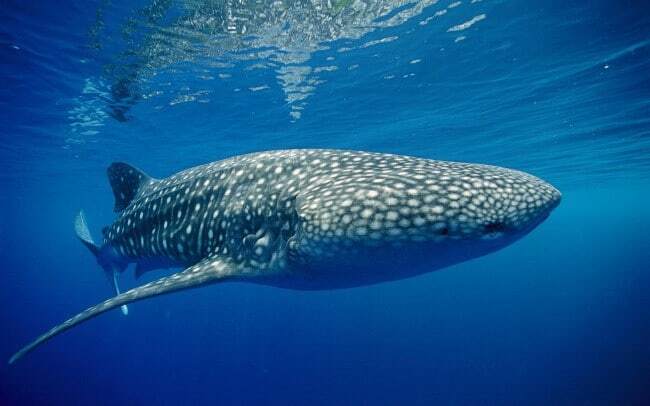
Tiger Shark is one of the most dangerous and fastest marine inhabitants with a maximum speed of 53 km / h. It is also one of the largest modern sharks with a body length of up to 5 meters. Active predators and fine swimmers, tiger sharks usually slowly patrol the territory, making barely perceptible movements, but become fast and mobile, having smelled food. During an attack or flight, they are able to instantly develop high speed. Tiger sharks are found near the coast, mainly in tropical and subtropical waters around the world.
8
Albula Speed up to 60 km / h

Albula takes the eighth line in the list of the fastest fish in the world with a maximum developed speed of 60 km / h. It is a predatory fish that is found in the waters of the tropical and subtropical seas. The size of a large individual can reach 1 meter in length, and weight up to 9 kilograms. Most of the marine life is used as a catch on sports fishing.
7
Swordfish Speed up to 65 km / h
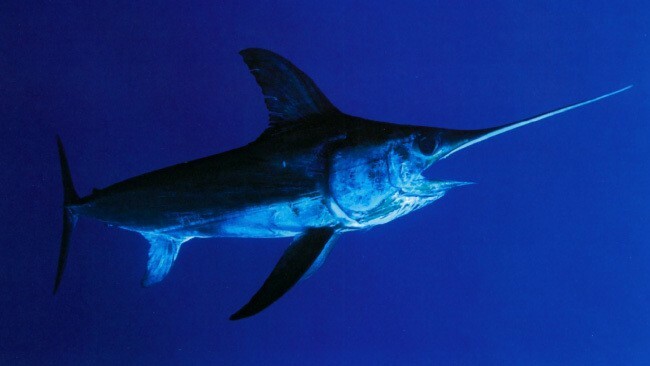
Swordfish is able to move in water at a speed of 65 km / h, which allows it to be ranked as one of the fastest fish in the world. It got its name due to a very elongated and flattened upper jaw, which has the shape of a pointed sword and is up to a third of the length of the entire fish. Pelvic fins of swordfish are absent, and the tail has a semilunar form, immediately indicating the high speed qualities of its owner. As for the dimensions of the marine life, it can reach 4.55 m in length and weigh 650 kg. There is a swordfish in the tropical and subtropical waters of all oceans, it occurs only in the Black and Azov Seas, where it appears only in the summer. It is an object of fishing, mainly pelagic tier, and a valuable trophy of sport fishing - fishing by the method of trolling. Attacks on humans were not recorded until May 2015, when in Hawaii swordfish attacked the skipper of the fishing boat Rens Lleins, who had spoiled it. The sword pierced the chest, and the man died.
6
Blue Shark Speed up to 69 km / h

Blue Shark is one of the fastest marine predators with a maximum developed speed of 69 km / h. Large predatory fish are found and away from coasts, in oceanic expanses, and near the coastline. But it is more customary to see these fish on the high seas, as part of the convoy of ocean vessels and liners, so the blue shark is considered, mainly, pelagic fish. Perhaps this is one of the most numerous species among the sharks of the World Ocean, along with such common predators as herring and salmon sharks.
5
Southern Bluefin tuna Speed up to 74 km / h
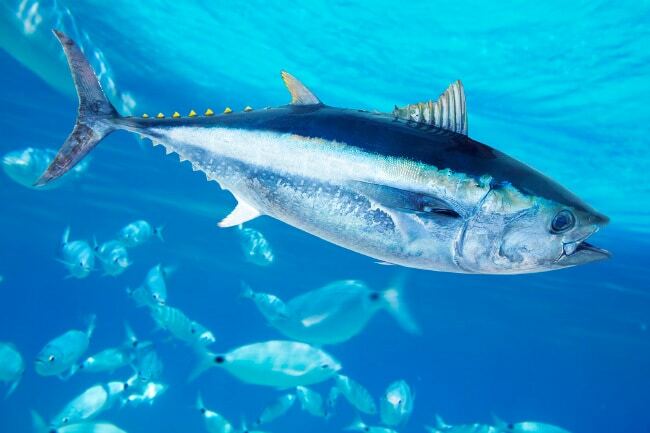
Southern blue tuna with a speed of swimming 74 km / h takes the fifth line of the rating of the fastest fish in the world. Pacific bluefin tuna are in constant motion. When they stop, breathing becomes difficult because the gill covers open in accordance with the transverse movements of the body to the left and to the right. Water through the open mouth passes into the gill cavity only on the move. This is schooling pelagic fish, making long migrations. Sometimes they form jambs with similar in size tuna of other species - long-billed, yellow-eyed, large-eyed, striped, etc. The diet is varied and depends on the forage base in the fattening areas. Its basis is formed by schooling pelagic fish that inhabit the surface of the water.
4
Yellow tuna Speed up to 75 km / h
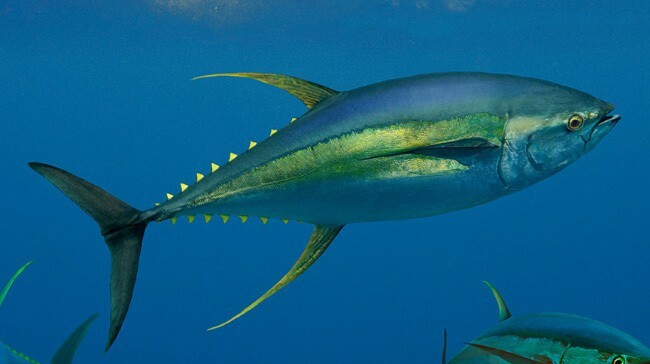
Yellow tuna is one of the fastest fish in the world with a travel speed of 75 km / h. Sea predator is distinguished primarily by its huge size, it is capable of reaching two and a half meters and weighing 200 kilograms. He got his nickname for the corresponding color, his body is painted in a gray-blue color, and along the back there are longitudinal lines of yellow-white color. In total, such lines are 20. The anal fin of this type of tuna is also colored bright yellow. Also on the sides is a long solar strip, but in some individuals, it is absent. Lives Yellowfin tuna is mainly in flocks, it feeds on squid, small fish and various crustaceans.
3
Striped marlin Speed up to 77 km / h

Striped marlin opens the top three fastest fish in the world with a travel speed of up to 77 km / h in water. Got its name due to the well-defined transverse banding of the trunk. Extremely rare in the equatorial zone, it makes considerable migrations, during which this fish moves to higher latitudes during the warm season and returns to the warm-water areas of the range in winter. The predator feeds mainly on squid, fish and crustaceans.
2
Stavrida Speed up to 80 km / h

Stavrida is the second fastest fish in the world. A marine animal can develop an impressive speed when swimming, which is equal to 80 km / h. High speed plays a very important role for horse mackerel, because it is a predator and it helps it to quickly catch its prey. She is a schooling fish, which moves in the water column to form jambs. It lives in warm waters within the continental shelf, often near the shore. Reproduces in the warm season. It feeds on plankton and small fish, sometimes by bottom invertebrates.
1
Sailboat Speed over 100 km / h
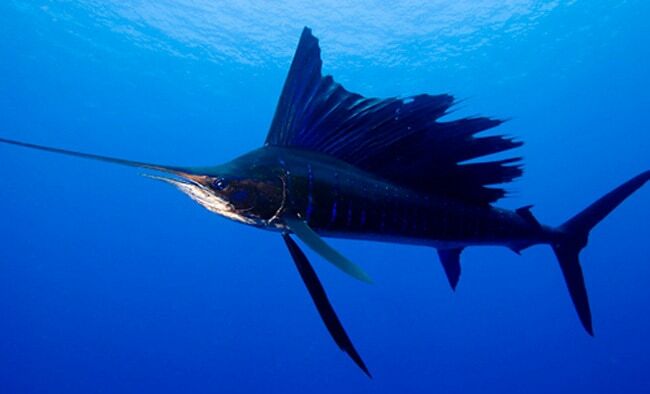
The is the fastest fish in the world, capable of speeds exceeding 100 km / h. In a series of tests conducted in one of the fishing camps, the sailboat swam 91 m in 3 seconds, which is equivalent to a speed of 109 km / h. In contrast to the vast majority of bony fish, sailfishes and related species of families of sailfish and mechery use effectively turbulence, that is, water does not flow around the body layer by layer, as in laminar flow, but by forming swirls that help them reduce water resistance. Far outwardly prominent outgrowths of the upper and lower jaws allow to achieve the effect of turbulence at lower speeds. With fast swimming, the sail folds and retracts into a special recess on the back. Just hide the anal and long pelvic fins. With sharp turns at high speed fins rises sharply. Sometimes sailboats drift slowly at the surface of the water with a fully extended, overhanging sail above the water.
